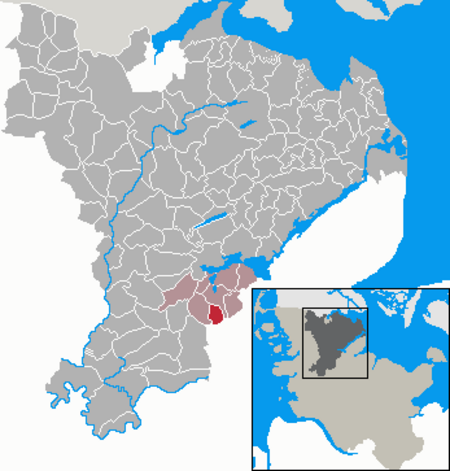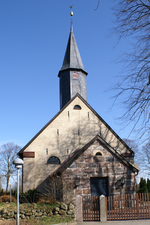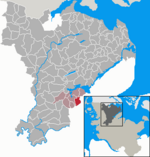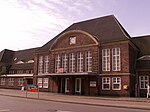Hedeby (Danish pronunciation: [ˈhe̝ːðəˌpyˀ], Old Norse Heiðabýr, German Haithabu) was an important Danish Viking Age (8th to the 11th centuries) trading settlement near the southern end of the Jutland Peninsula, now in the Schleswig-Flensburg district of Schleswig-Holstein, Germany. Around 965, chronicler Abraham ben Jacob visited Hedeby and described it as, "a very large city at the very end of the world's ocean."The settlement developed as a trading centre at the head of a narrow, navigable inlet known as the Schlei, which connects to the Baltic Sea. The location was favorable because there is a short portage of less than 15 km to the Treene River, which flows into the Eider with its North Sea estuary, making it a convenient place where goods and ships could be pulled on a corduroy road overland for an almost uninterrupted seaway between the Baltic and the North Sea and avoid a dangerous and time-consuming circumnavigation of Jutland, providing Hedeby with a role similar to later Lübeck. Hedeby was the second largest Nordic town during the Viking Age, after Uppåkra in present-day southern Sweden. The city of Schleswig was later founded on the other side of the Schlei. Hedeby was abandoned after its destruction in 1066.
Hedeby was rediscovered in the late 19th century and excavations began in 1900. The Hedeby Museum was opened next to the site in 1985. Because of its historical importance during the Viking Age and exceptional preservation, Hedeby and the nearby defensive earthworks of the Danevirke were inscribed on the UNESCO World Heritage List in 2018.Hedeby is mentioned in Hans Christian Andersen's fairy tale The Marsh King's Daughter.











